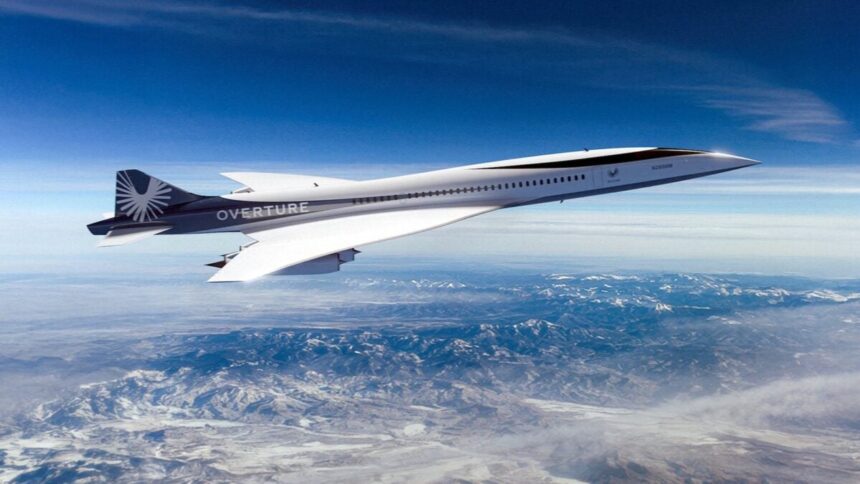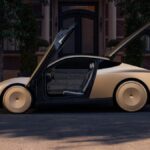It’s been 22 years since the last flight of the Concorde, a now-retired supersonic airliner that flew at a maximum speed of 1,345 miles per hour (2,179 kilometers per hour). At those speeds, you could fly from London to New York City in around three hours. A long-held U.S. ban on supersonic flight over land limited Concorde’s routes and continues to restrict commercial aircraft from flying faster than sound over land. Today, those super speedy—and super loud—flights could be making a comeback.
President Donald Trump signed an executive order on Friday to reverse the 1973 ban on civilian supersonic flights, instructing the Federal Aviation Administration (FAA) to establish a standard for supersonic aircraft noise certification. The decision would make way for faster routes, if companies can figure out ways to make their aircraft quieter and more affordable.
When planes fly faster than the speed of sound, Mach 1, or about 767 miles per hour (1,234 kilometers per hour), they create a loud, explosive noise due to the shock waves created by the extreme speeds. It sounds like loud thunder and it would startle people living in cities where supersonic jets fly overhead. As a result, the FAA prohibited supersonic flights of non-military aircraft over land, enacting the measure on April 27, 1973. At the time, aerospace technology wasn’t advanced enough to resolve the noise issue; since then, however, research has shown ways to soften the sounds of supersonic flights.
Boom, a Colorado-based company, is working on a supersonic airliner, named Boom Overture. Its current prototype, XB-1, is designed to fly at Mach 1.7 while carrying 64 to 80 passengers on board. As the leading U.S. company in the market today, Boom naturally welcomed the decision. In late January, Boom Supersonic flew its experimental aircraft faster than sound for the first time. Boom has seen interest from carriers like American Airlines and United Airlines.
Before we get ahead of ourselves, the administration’s reversal of the ban came with a set of rules. Trump’s executive order directed the FAA to revoke the supersonic speed limit as long as aircraft do not produce an audible sonic boom on the ground. “The Order instructs the FAA Administrator to establish a standard for supersonic aircraft noise certification that considers community acceptability, economic reasonableness, and technological feasibility,” according to The White House. It also claims that recent developments in aerospace engineering “make supersonic flight not just possible, but safe, sustainable, and commercially viable.”
NASA is working on its own solution to soften the impact of sonic booms. Earlier this year, the agency fired up the engine of its X-59 research aircraft, which is designed to fly faster than sound but with drastically reduced noise. “People below would hear sonic ‘thumps’ rather than booms, if they hear anything at all,” NASA wrote in a statement. The plane is designed to reduce the pressure change that flows over the ground, thereby reducing the sound. The X-59’s engine is mounted on top of the aircraft, which reduces the amount of noise from the plane that reaches the ground.
Aside from the noise, commercial supersonic flight has also been criticized for its negative impact on the environment. Supersonic aircraft consume more fuel. Concorde burned through 22 tons of fuel per hour—twice as much as a Boeing 747, which can carry four times as many passengers, according to Transport & Environment.
To help address the negative environmental impact, Boom says its planes will operate on sustainable alternative fuels. That may not fully resolve the issue, as faster planes need to fly at higher altitudes, where the air is thinner and there’s less drag and heat generation. At those higher altitudes in Earth’s stratosphere, the emissions from the plane would linger up to 20 times longer, according to Aerospace America. NASA says it’s working to find solutions for those challenges as well.
Supersonic flights are also expensive, with pricey operation costs and premium services at extremely high fares. Concorde, for example, was not considered profitable as the cost of fuel far exceeded the profit made per flight. Airlines hoping to get in on the supersonic action need to figure out a sustainable model to offer customers for a quicker flight.
Lifting the ban may have been the first step, but there’s still a long way to go before faster routes take off in the skies.
Read the full article here












